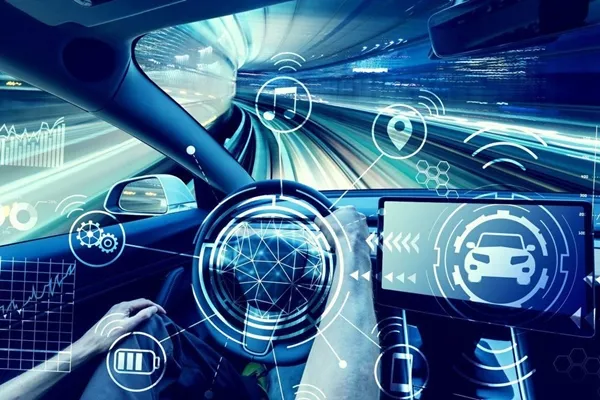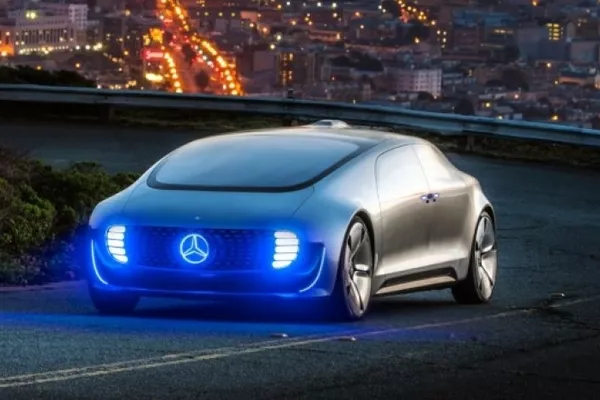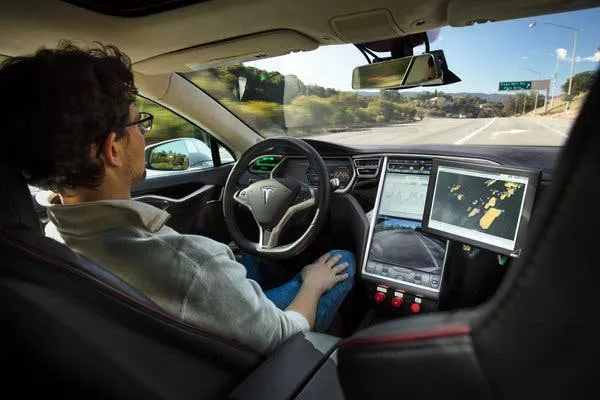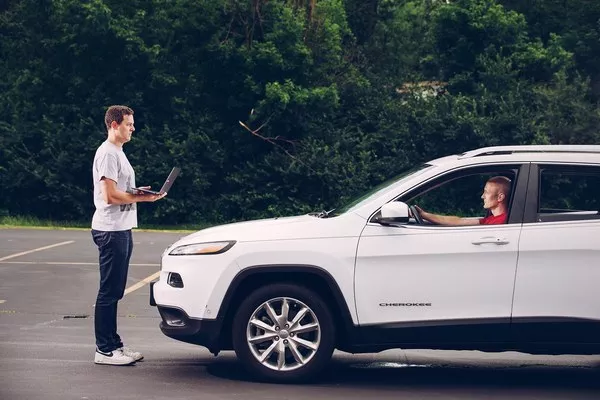Technology has contributed a lot to make our lives easier and more convenient. The modern world revolves around technology – from the most advanced gadgets, home appliances, to industrial machines. Advanced technology is also applied to modern vehicles. The latest cars have the most advanced technological features.

Technology has contributed a lot to make our lives easier and more convenient
Just when you think cars can’t get more advanced, you have to think again. Have you heard of a driverless car? Yes, a vehicle that does not need a driver. You might think it's not possible, but it is. Philkotse.com will help you understand what driverless cars are and the reasons why most people find it scary.
1. What is a driverless car?
A driverless car is called by many names including robotic cars, autonomous cars, and self-driving cars. This car can sense its surroundings and move safely with very little to no driver input.
Driverless cars utilize combinations of different sensors to detect their environments such as odometry, GPS, sonar, lidar, radar, and inertial measurement units. This car has advanced control systems that interpret all the information from the sensors. The information is used to determine the right navigation paths, including relevant signage and obstacles.
The technology is said to be applied and implemented to long-distance trucks. Self –driving vehicles are already being produced. With the development of these cars, it is undeniable that the future of transportation is bright.

A driverless car is called by many names
>>> Read more: Self-driving car: 9 advantages for Filipino drivers.
2. How driverless car works?
Amidst the entire buzz, you might wonder how driverless cars work. With the technological bounds and leaps people have created for the past years, it finally culminated in creating driverless cars. Autonomous cars exist and made possible by these three technologies:
IoT Sensors
There are various types of sensors we have today, which help in making the self-driving car turn into reality. The sensors for LIDAR, camera, radar, forward collision warning, blind-spot monitoring, and ultrasonic work together in making the navigation of the driverless vehicle possible.

There are various types of sensors we have today, which help in making the self-driving car turn into reality
IoT Connectivity
Driverless vehicles utilize cloud computing that works upon maps, traffic data, adjacent cars, weather, surface conditions and many more. It helps in monitoring the car’s environment better. It also creates more informed decisions. However, these advanced cars require to be connected to the internet, even when edge computing hardware can locally solve small computing tasks.
>>> Also check:
- Components of self-driving cars that allow self-navigation.
- CES 2019: Self-driving cars, electric vehicles, connected technologies & more.
Software algorithm
The entire data collected from the car’s sensors will be analyzed. It is to determine the most suitable course of action. This job is the responsibility of the control algorithms and software. It’s the most complex part of the driverless car because it is the one making the decisions flawlessly. If ever a “flaw” occurs, such as the Uber’s self-driving accident, it can be really fatal.

The entire data collected from the car’s sensors will be analyzed
3. Reasons why driverless cars are scary
Today, the most popular driverless cars are those created by Google and Tesla. However, many people are still hesitant to try these cars because they think that their safety is compromised. Here are the top three reasons why self-driving vehicles are scary.
Road accidents
A driverless car needs to operate on existing city streets, roadways, and highways. But the infrastructure we have today hasn’t been optimized for the use of self-driving vehicles and could, therefore, result in accidents.
As mentioned above, these advanced cars should be programmed in software. It means, there will be no “smart” speed limit, no buried wires, no special paint nor turn lane signs would guide the car in finding its way around. It can cause trouble because our roads are very unpredictable and anything can happen all the time. Self-driving cars might not be able to cope up to sudden changes.

The infrastructure we have today is not optimized for the use of self-driving vehicles and could result in accidents
Also, driverless cars might fail to navigate through heavy rain which can distort or hide the painted lines on highways and roads. It can either make the autonomous navigation system useless or erratic.
Plus, driverless vehicles might provide a false sense of security. We become very dependent on technology which increases the reaction time of up to 17 seconds to change a driving situation. It is very different when driving a regular car. It will only take a second for the driver to react immediately if unexpected events happen.
>>> Have you known an Uber self-driving car kills a pedestrian in Arizona?
Car malfunctions and hacking
Just like any other computing device, robotic cars can also be hacked. There are lots of skilled hackers everywhere. They can easily find a way to take control of the car's acceleration and steering. If this occurs, it can compromise the rider's safety in different ways.
For instance, these skilled hackers can take control of a self-driving car and gain access to the personal information of the car owner. This information can be sold or held for ransom by the hacker.

Robotic cars can also be hacked
In addition, there’s also a possibility of terror attacks. The terrorist could gain control over the car and utilize it as a weapon.
And just like anything else in the world, the system of the autonomous cars can also malfunction. Or experience an unexpected glitch, causing the vehicle to operate unpredictably or stop all at once. This becomes extremely dangerous when the vehicle is running at a rapid rate.
Increased exposure to electromagnetic field radiation
Driverless cars increase the passenger's exposure to radiation. They can get exposed from remote controls, powered accessories, Wi-Fi connectivity, Bluetooth, music and radio systems, GPS tracking tools, GPS guidance and all other features present in the self-driving car.
If a person is continuously exposed to electromagnetic field radiation, he or she can experience sleeplessness, chronic exhaustion, inner agitation, migraines, headaches and he/she is also susceptible to infection. EMF harms people's health.
>>> You need to know: 3 driving habits that can cause cancer and other health problems.

Driverless cars increase the passenger's exposure to radiation
Certain people have developed electromagnetic hypersensitivity in which they suffer fluctuating blood pressure and sudden shortness of breath. Some people were reported to develop eye problems due to constant exposure to EMF.
Driverless cars are considered to be one of the high-tech vehicles we have today, meaning, it's designed to operate with the use of various electronic devices which all emit electromagnetic field radiation.
The leap in technology like driverless cars can provide lots of inconvenience to our daily lives. However, it also comes with a load of possible health risks to people as well.
Recent posts
- Best car features that are convenient but not really priorities Jan 26, 2021
- Top 7 modern driver assist features in cars today Oct 22, 2020
- What fancy high-tech car features should be prioritized? Nov 24, 2018
- Audi makes us more surprised with self-driving Audi A8 Apr 13, 2021
- Google’s self-driving car sparking historic change Nov 09, 2017












